Day 6 Sept 2 Part 2 The Valley of the Kings: Two tombs at the Valley of the Kings
As you remember we last broke off in the Valley of the Kings, wandering around looking at enticing entrances to various tombs.

The next tomb we were able to enter was that of Ramses III known as KV 11.


Around it are lovely murals with scenes from the Book of Gates and the Amduat, a book telling the story of the sun god's travel through the underworld. This image from the Egyptian Museum shows the nature of those depictions.

It is a little bit severe, but given the heat of the field, it was probably a nice sanctuary from the heat and dirt.

It is sad that someone who loved Egypt and Egyptology so much could not resist "borrowing" items, but there is no doubt that he contributed greatly to the field of Egyptology and public knowledge about ancient Egypt.
The footprint of this tomb is a bit unique. It was originally being dug for King Sethnakhte. He had three chambers dug and decorated, but then abandoned the project and found a different location. This could be because the construction collided with tomb KV 10. They managed to turn the room into a niche, but then decided to veer off uncharacteristically to the righthand up (while most tombs take a turn to the left as they continue to descend.)
Sethnakhte was Ramses III's father, so the son must have decided to pick up where is father left off.

This is one of the corridors decorated for Sethnakhte containing the litany of Re.
Side niches were decorated by Ramses III often with secular scenes.
The tomb is sometimes called Bruce's tomb because a noted 19th century traveller James Bruce who made the tomb famous by drawing renditions of blind harpists found in the third corridor niches. I did not capture images of them, but there is a lovely blog that did: Passion Égyptienne.
The third corridor shows Sethnakhte before a variety of deities in lovely renditions.
The fourth corridor begins to focus on images of Ramses III.
These cartouches bear the name of Ramses III
The next tomb we went to was KV2, what our egyptologist guide called a perfect tomb. (I'm not sure I have the division of the tombs in exactly the right place, but I do know that KV2 has those marvelous bright blue and yellow ceilings.)
When you enter you see this marvelous winged being on the ceiling.
Wikipedia has a nice schematic for KV 2 showing the turn to the left characteristic of most tombs.
20th Dynasty tombs tended to be laid out in a pretty straight line and this one is no exception.
Ramsès IV had a really short reign of about 6 years ( 1155-1149 BCE) fewer even than Tutankhamen.
Below is a depiction of the King before the Sun god Ra.
The tomb has been open since Graeco-Roman times and is notable for the abundance of antique graffiti. (If you click on the image, you can make it larger and see the graffiti more clearly.)
The burial chamber has a huge sarcophagus. When it was discovered it had already been broken into and Ramses IV body was actually located in 1898 with a cache of other mummies in KV35 the tomb of Amenophis II.
This is what you see as you approach the burial chamber.
Graffito by ancient scribe Penamun may explain the movement of the mummy. He evidently undertook to get the mummy of Amenophis I moved in 1193 (under the reign of Smendes) according to Reeves and Wilkinson in their book The Complete Valley of the Kings.
The huge sarcophagus is very impressive. You can see an effigy of the King on the top.

The ceiling displays stories from the Book of the Heavens.
They found a few Shabtis and some glass objects in the tomb, but most things were robbed by the tomb robbers. Far too quickly our time expired and we had to head back to the bus.

Our next stop was the Egyptian home of famed Egyptologist Howard Carter (who discovered the tomb of Tutankhamen in 1922.)
Carter was not a saint. He was a working class guy, who had little education and evidently a short temper, but he loved Egypt and Egyptology despite never having studied it.
He had an aptitude for drafting and was hired to do drawings of Egyptian artifacts for the Egypt Exploration Fund. He worked under the renowned Flinders Petrie for a year at Amarna and eventually he was appointed Inspector of Monuments for Upper Egypt. During his work in Egypt, he improved protection and access to excavation sites and developed a grid system for the recording of tombs at the Valley of the Kings. He lost his job in the so-called Sakkara Affair, because he favored the side of Egyptian security against the complaints of French tourists. Afterwards he remained unemployed for three years before connecting with Lord Carnarvon to explore tombs in the Valley of the Kings.
His home was lovely and shows his love of his homeland England as well as his devotion to his work in Egypt.
This is the dining room (which has a large English landscape painting of a faun in the woods on the wall.)
There was a cute little veranda off the dining room where one might sit and smoke or enjoy a cup of tea.
The home had indoor facilities.
The kitchen was roomy with pots, a scale and even a small mouse trap on the shelf.
These are Zirs or Zeers, a pot in a pot system used to keep foods cool and fresh.
Here is another way that they kept food cool and fresh.
Carter's wife did not come with him to Egypt. There was a single bed room in the house.
There was a also a dark room in the house and this beautiful large format camera.

The most impressive room was a work area that had lots of space for drawing and examining artifacts.
This would be such a nice space for an artist and researcher to work in.
Carter was an interesting person, but I would be amiss if I didn't mention the fact that he wasn't completely honest. He catalogued thousands of objects over the years, most of which ended up in the Egyptian Museum. When he died, however, a letter was discovered from a friend of his named Alan Gardiner. In it Gardiner accused Carter of giving him a stolen amulet from King Tutankhamon's tomb.
He had received the Order of the Nile from King Fuad I in 1926, but there were also suspicions that he had been pilfering items from his finds. The letter confirmed this information and Egyptologist Henry Burton went through Howard's estate finding an additional 18 items that Carter should not have taken.
These objects he sent to the Egyptian museum or to the Metropolitan Museum in New York. (The Met has since returned all the objects they received from Burton.)


























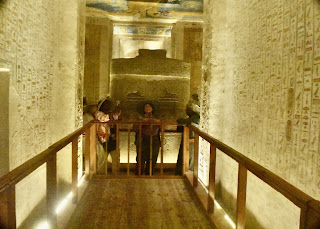








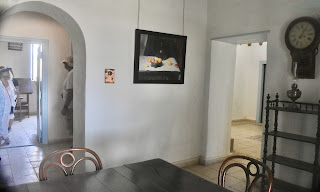



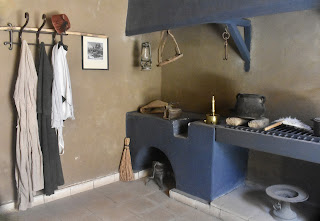









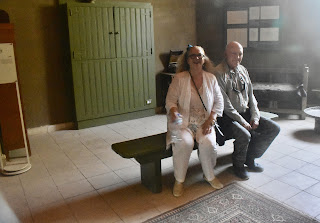

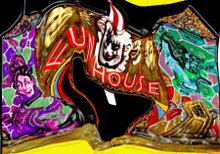

No comments:
Post a Comment